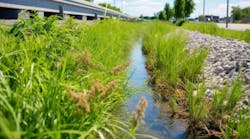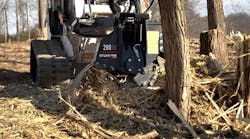We all know that without healthy soil, our revegetation efforts are doomed before they begin. Topsoil is, quite literally, the foundation upon which our food system is built—it nourishes and grows the crops that we eat and feed our livestock.
I wrote last month about farms in Kansas where heavy storms and flooding had washed away much of the topsoil and a program in Oregon planting cover crops between rows of hazelnut trees to prevent erosion. But the problem of degraded soil is a global one, and it’s spreading.
Desertification is the process by which land becomes unable to support the plant growth or the economic productivity it had in the past. This is an obvious a problem for agricultural lands as the global population grows—without healthy soil, it will become increasingly challenging to feed over 7.5 billion people. But any area where vegetation struggles to grow is at greater risk of increased erosion, surface runoff, and sedimentation.
According the World Economic Forum (WEF), arid areas and drylands are particularly susceptible to desertification and soil degradation due to the lack and variability of rainfall and poor soil fertility. Drylands are those areas where the rainfall the land receives is between 5 and 65% of the water lost through evaporation and transpiration. Approximately 38% of the world’s land is dry or arid—you can see a map of the distribution of dryland around the globe on WEF’s website.
Looking at the map of global dryland distribution, there’s plenty to notice. First, the vast majority of Australia is dry or arid. Most of the Middle East and Central Asia, a large portion of India, and North and southern Africa are also incredibly dry. There’s also a large swath in the western half of North America that’s dry, including much of California. All these areas are already at increased risk of desertification and soil degradation, but even historically less-dry areas are at risk. According to a report released by the European Court of Auditors,“Hot semi-deserts already exist in southern Europe, where the climate is transforming from temperate to dry. This phenomenon is extending northwards. The long period of high temperatures and low rainfall in Europe in the summer of 2018 reminded us of the pressing importance of this problem.” The report, “Combating desertification in the EU: a growing threat in need of more action,” can be read in full online.
There are steps that can be taken to prevent or reverse soil degradation including no-till farming; reducing deforestation, increasing agricultural use of cover crops; and evencombating the urban heat island effect, since higher temperatures allow more water to evaporate from the land surface. First, however, we must believe our soil is worth protecting.
Have you worked on projects that involved degraded soil or preventing desertification? Send your experiences, thoughts, and comments to [email protected].






